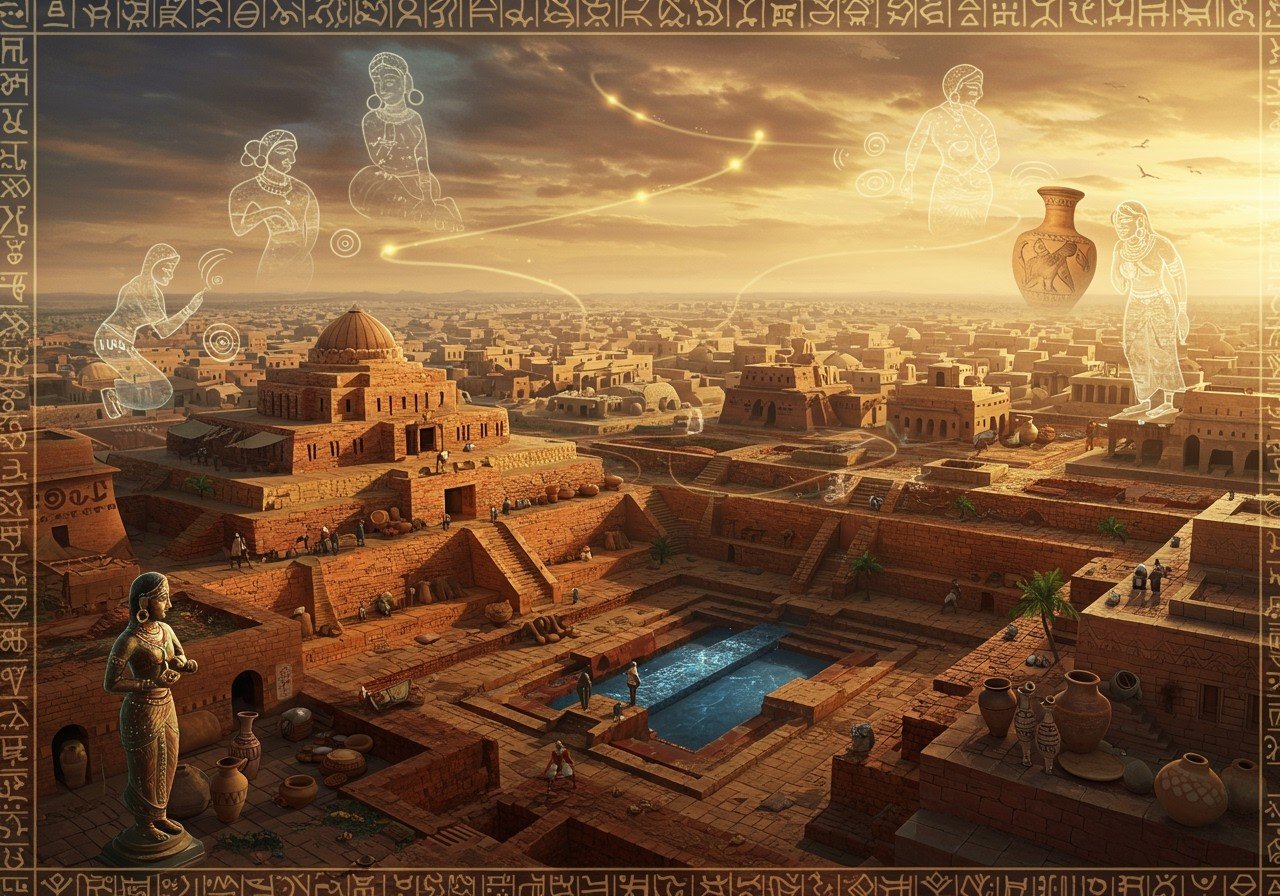
Delve into the captivating world of Harappa, also known as the Indus Valley Civilization, through the lens of Hindi language and culture. This exploration unveils the historical significance, cultural nuances, and enduring legacy of one of the world’s oldest urban societies. This article caters to those interested in Indian history and culture, offering insights into the origins, advancements, and lasting impact of Harappa.
Harappa (हड़प्पा): Unraveling its History
Harappa (हड़प्पा), unearthed in 1921 by archaeologist Daya Ram Sahni, holds a prominent place in the narrative of the Indian subcontinent. Situated along the Ravi River, it flourished as a major urban center within the Indus Valley Civilization, which thrived from approximately 3300 BCE to 1300 BCE. The civilization’s rise from a Neolithic village culture to a sophisticated urban society speaks volumes about its innovative spirit.
Along with Mohenjo-daro, Harappa showcased advanced urban planning, featuring grid layouts, sophisticated drainage systems, and standardized construction techniques. These features highlight the remarkable engineering prowess of the time. The discovery of artifacts like seals, pottery, and tools offer glimpses into the daily lives, trade practices, and societal structures of the Harappan people. Theories surrounding Harappa’s decline around 1500 BCE range from climate change and natural disasters to possible invasions, a testament to the ongoing scholarly debate about this pivotal period.
The Significance of Harappa (हड़प्पा) in Hindi
The cultural and historical importance of Harappa (हड़प्पा सभ्यता) is immense. The term “Sabhyata” (सभ्यता), meaning civilization, aptly describes the advancements and societal complexities of this era. Harappa’s contributions to early urbanization laid the groundwork for subsequent Indian cultures. Its thriving trade networks, particularly with Mesopotamia, played a crucial role in economic development and cultural exchange.
Evidence suggests a possible class system and communal living arrangements within Harappan society. Religious and cultural practices, inferred from artifacts like the Pashupati seal and various figurines, provide valuable insights into their belief systems. Agriculture formed the backbone of their economy, with the cultivation of wheat, barley, and the domestication of animals. The legacy of Harappa continues to be a vital part of Indian education, ensuring its place in the national consciousness.
Harappa Civilization (हड़प्पा सभ्यता): A Broader Perspective
The broader aspects of the Harappan civilization are equally remarkable. Its technological advancements encompassed metallurgy, bead-making, and standardized weights and measures, demonstrating their ingenuity and precision. Architectural innovations included residential buildings, public baths, and granaries, reflecting a well-organized and sophisticated society.
Artistic achievements are evident in the intricate designs found on pottery, terracotta figurines, and jewelry. The undeciphered Indus script represents one of the earliest forms of writing, adding to the mystique and allure of this ancient civilization. Their environmental practices, including water management and sustainable resource utilization, offer valuable lessons for contemporary society. The influence of Harappa is palpable in modern Indian culture, literature, and media, underscoring its enduring relevance.
Frequently Asked Questions About Harappa
What is Harappa? Harappa was a major urban center of the Indus Valley Civilization, known for its advanced urban planning and sophisticated culture.
What is the historical significance of Harappa? Harappa’s significance lies in its contribution to early urbanization, trade networks, and cultural development in the Indian subcontinent.
What are the key features of Harappan civilization? Key features include advanced urban planning, drainage systems, standardized construction, trade networks, and unique artifacts like seals and pottery.
Why did the Harappan civilization decline? Several theories exist, including climate change, natural disasters, and possible invasions, but the exact cause remains a subject of ongoing research.
Poojn.in: Your Source for Cultural and Religious Products
Connect with your heritage and explore a wide range of authentic puja items, including those related to ancient traditions like the Indus Valley Civilization, at Poojn.in. We offer a diverse selection of high-quality products to enhance your spiritual practices and cultural experiences.
Discover brass statues of deities (Lakshmi, Laddu Gopal, Radha Krishna), incense (dhoop), and other essential items (bamboo stick containers, kush asan) for your puja needs. Immerse yourself in the rich tapestry of Indian culture with Poojn.in.
Further explore related topics on our blog:


